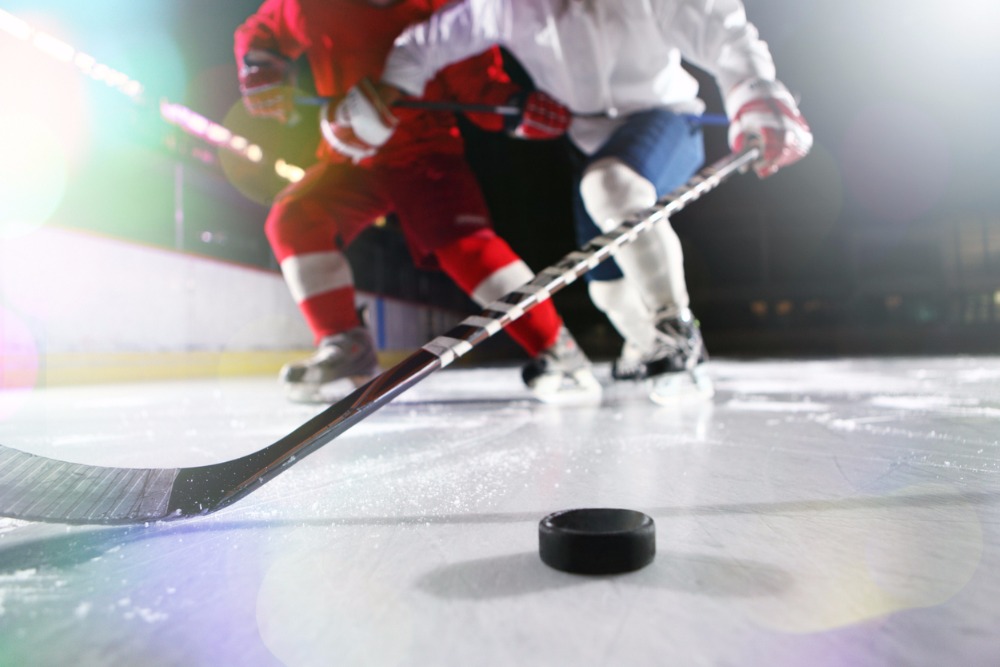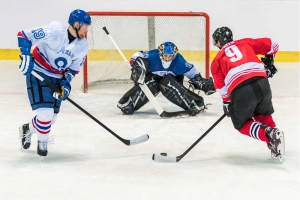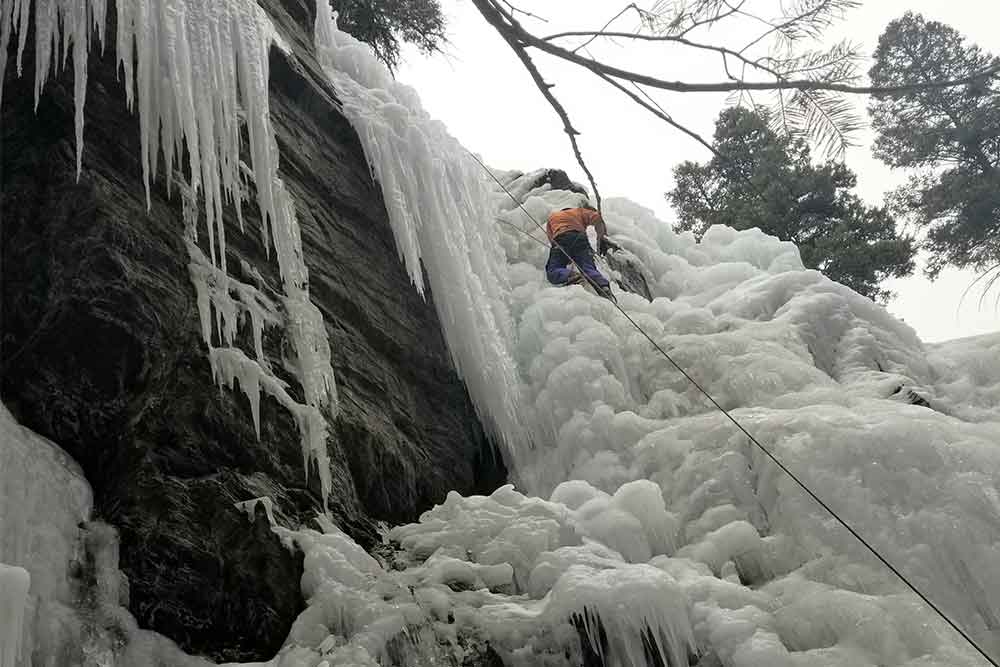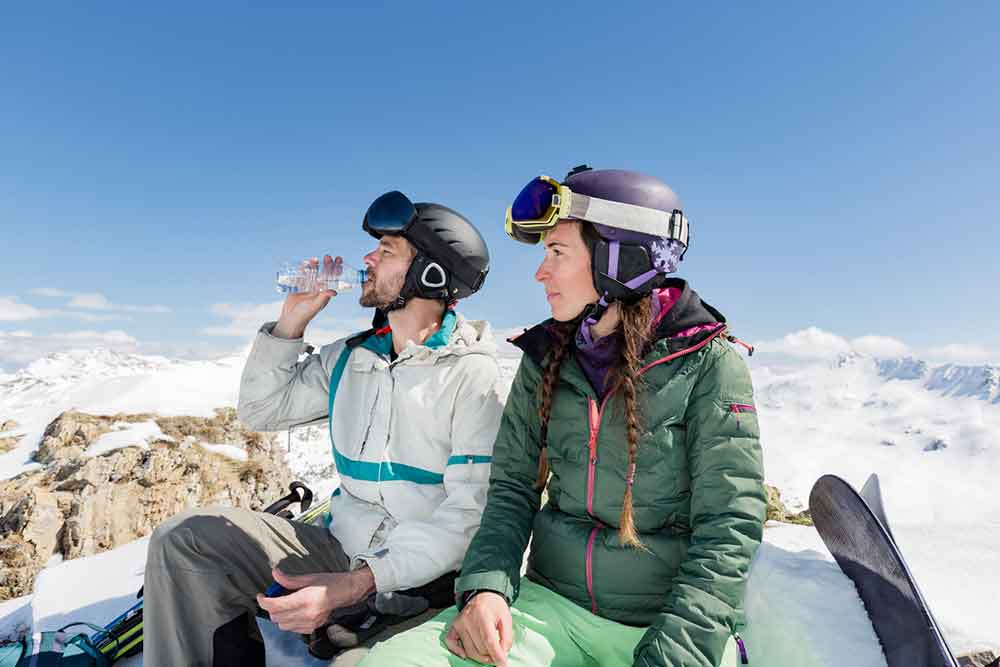Hydration For Hockey Performance

Moji Kaviani, Ph.D., CEP
Ice hockey is a team sport that requires players to have strength, power, anaerobic sprint ability, and endurance successful (Emerson, 2017). The game itself is characterized by intermittent, high-intensity bouts of skating which require players to rapidly accelerate and change their speed and direction continuously while executing a variety of skilled maneuvers and potentially dealing with high-impact body contact while also cognitively processing the game (Fidos-Czuba & Zajac, 2016).
Hockey is comprised of three 20-minute periods with intermissions lasting 15-20 minutes in between periods where teams return to their dressing room. Shifts typically last 30-60 seconds and players return to their bench between the interspersed shifts and engage in static recovery periods which last from 1 to 4 minutes.
Replenishing Lost Fluids
It has been shown previously through time motion analyzes that a majority of the time during a hockey game, players are inactive, which should theoretically give them ample time to replenish lost fluids. Instead, many athletes are only replenishing ~50% of sweat loss, causing them to voluntarily dehydrate themselves (Logan-Sprenger, Palmer & Spriet, 2011). The term voluntary dehydration is coined from the concept that thirst during exercise does not drive people to take in fluid at the rate of fluid loss (Coyle, 2004; Ozolina, Pontaga & Kisis, 2014). With voluntary dehydration, athletes are allowing themselves to fall victim to exaggerated increases in heart rate, core temperature, and perceived exertion, and decreases in stroke volume and cardiac output (Ozolina, Pontaga & Kisis, 2014). It is believed by the National Athletic Trainers Association and many others that fluid replacement should approximate sweat and urine losses and at least maintain hydration at a less than 2% body weight reduction (Coyle, 2004).
Related Article: A Taste Of Sugary Drinks May Improve Athletic Performance
Cool Environment, Heavy Equipment
The game of ice hockey is played in a relatively cool environment where temperatures range from 5 to 15 degrees Celsius (Palmer, 2012). One might think that the cool environment would reduce sweat rates, however, the heavy padded equipment worn in hockey, which only allows the face to be exposed, and the high-intensity intermittent exercise causes sweat rates to be high.
Sweat rates are dependent on the individuals’ genetic differences, the aerobic fitness status of the player, and the player’s hydration status (Ozolina et al., 2014). In a study performed by Logan-Sprenger et al. (2011), it was found that well-trained hockey players had a high average sweat loss of 3.2 +/- 0.2 L during a game. Sodium chloride is the major salt lost in sweat, with sodium being the most important electrolyte in regard to performance and health (Coyle, 2004).
Position Matters
The sweat rate of a hockey player, on top of the previously mentioned factors, is correlated with the position that the athlete plays. During practices, goalies are found to have the highest sweat loss due to their constant involvement in the drills, while forwards and defensemen have time to rest between drills as they wait for their turn. During a game, goalies only have to react to play that is occurring at their end of the ice, while forwards and defensemen are constantly active throughout their shift, which results in greater sweat loss during the game compared to practice (Logan-Sprenger et al., 2011; Palmer & Spriet, 2008). The rate of sweat loss significantly contributes to the voluntary dehydration of hockey players, which in turn can be detrimental to the performance of intermittent high-intensity exercise, muscular endurance, and maximal aerobic power (Noonan, 2006). In addition, sweat rates in hockey players accelerate fatigue through a reduced ability to dissipate heat through their protective equipment and cause a decrease in cognitive performance (Palmer, 2012).
Water, Carbohydrates, And Electrolytes
It has been found that athletes benefit from consuming a various mixture of water, carbohydrates, and electrolytes while training or competing (Coyle, 2014), especially if training or competition is lasting for more than 60 minutes. When carbohydrates are consumed in a drink, it has been shown to delay fatigue and improve performance, in comparison to a placebo (Ozolina et al., 2014). In a study performed by Palmer et al. (2010), it was found that players who consumed a carbohydrate-electrolyte during a practice had a total sodium deficit of –3.1g, whereas players who drank strictly water had a sodium deficit of –3.9g. The inclusion of a carbohydrate-electrolyte solution during practice increased sodium intake, improved overall sodium balance, and provided players with carbohydrates during exercise, all while fluid intake was not affected (Palmer et al., 2010).
This data is beneficial for those athletes participating in more than one exercise bout in 1-day as it is unlikely that the sodium deficits from the previous training session can be replenished if consuming water only during the first training session (Palmer & Spriet, 2008); if training sessions are separated by days, athletes can typically restore sodium through their normal diet.
Related Article: 6 Exercise To Get Ready For Hockey
Recommendations
 Recommendations for what to drink during a practice or in competition for hockey is difficult because it is dependent on the variations in physical intensity, duration, and environment, as well as individual characteristics of the athlete, the individual’s rate of gastrointestinal absorption and feelings of fullness (Coyle, 2004). The goal with fluid replacement during hockey is to closely match sweat loss at a rate comfortable to the athlete to avoid increases in core temperature, heart rate, and ratings of perceived exertion at the same absolute and relative exercise intensities compared with a euhydrated state (Logan-Sprenger et al., 2011).
Recommendations for what to drink during a practice or in competition for hockey is difficult because it is dependent on the variations in physical intensity, duration, and environment, as well as individual characteristics of the athlete, the individual’s rate of gastrointestinal absorption and feelings of fullness (Coyle, 2004). The goal with fluid replacement during hockey is to closely match sweat loss at a rate comfortable to the athlete to avoid increases in core temperature, heart rate, and ratings of perceived exertion at the same absolute and relative exercise intensities compared with a euhydrated state (Logan-Sprenger et al., 2011).
It is recommended by the American College of Sports Medicine and the National Athletic Trainers’ Association Position Stands that athletes drink 400-600 mL in the 4 hours before exercise, and, if necessary, an additional 200-300 mL in the hour before practice and competition in order to be in a euhydrated state at the beginning of exercise (Palmer et al., 2010). Once exercise has begun, athletes should start drinking fluids early and at regular intervals in an attempt to consume fluids at a rate sufficient to replace water lost (Coyle, 2004). If an athlete only starts to consume water once they become thirsty, then they have already put themselves into a dehydrated state. It has been observed that dehydration increases muscle glycogen use during continuous exercise, which limits the amount of oxygen available to muscles, causing fatigue to occur more rapidly.
Related Article: HIIT For Hockey Performance
By including a carbohydrate solution into the mix of beverages being consumed during exercise, more blood glucose will be available, delaying fatigue (Coyle, 2004). And while it is important to be consuming both water and carbohydrates during exercise to maximize performance, it is important to consume sodium to prevent hyponatremia (Coyle, 2004). With the high sweat rates experienced by hockey players, they can lose 20 to 80 mmol x 1-1 of sodium, which could cause fatigue due to the development of muscle weakness or cramps. The addition of sodium to beverages can stimulate thirst, which could prevent voluntary dehydration, as well as replace sodium lost in sweat, which could prevent hyponatremia (Coyle, 2004).
Takeaway
In conclusion, it is important for hockey players to remain hydrated during training and competition in order perform to the best of their ability. If sweat rates exceed fluid intake, it could be detrimental to performance, both cognitively and physically. During exercise, one should consume water, as well as a carbohydrate-electrolyte solution to replenish blood glucose levels and prevent hyponatremia and fatigue.

Related Article: Concussions In Youth Ice Hockey
You Might Like:
Effects of Outdoor Exercise
Catherine O’Brien Why Does Exercising Outdoors Feel So Much Better? I have always been a proponent of outdoor exercise, particularly running. There is something so satisfying and therapeutic about the fresh air and the sound...Cold ~ Hard ~ Ice Climbing in the San Juans
Hank Shell The sound of tearing fabric reached my ear, as it always does, with the delicacy of a lover’s whisper. It was an unintelligible anomaly, mired as it was in the din of the...Carpe Diem, The Series: “DID SOMEONE STEAL THE SUN?!”
Paul Stevens For those of us who live around the Great Lakes area, we share a common affliction. The month of November is probably the dullest month of the year in terms of what seems...6 Ideas To Stay Active This Fall
Hank Shell Turkey Day has passed, and if you’re anything like me, you’ll spend the holidays in a cycle of binge eating and collapsing into a food coma, exercise be damned. Here in beautiful Telluride,...Hydration For Hockey Performance
Moji Kaviani, Ph.D., CEP Ice hockey is a team sport that requires players to have strength, power, anaerobic sprint ability, and endurance successful (Emerson, 2017). The game itself is characterized by intermittent, high-intensity bouts of...HIIT Exercises To Prep Your Body For Winter Sports
Alyssa Bialowas As an avid snowboarder and former competitive hockey player, winter sports have always been a significant part of my life. If you’re a big fan of winter sports too, you’re likely aware of...Emerson et al. (2017). Individual fluid plans versus ad libitum on hydration status in minor professional ice hockey players. Journal of the International Society of Sports Nutrition, 14:25
Roczniok, R., Stanula, A., Maszczyk, A., Mostowik, A., Kowalczyk, M., Fidos-Czuba, O., & Zajac, A. (2016). Physiological, physical, and on-ice performance criteria for selection of elite ice hockey teams. Biol Sport, 33(1), 43-48.
Coyle, E. F. (2004). Fluid and fuel intake during exercise. Journal of Sports Sciences, 22, 39-55.
Logan-Sprenger, H., Palmer, M., & Spriet, L. (2011). Fluid and sodium balance in elite male junior players during an ice hockey game. Applied Physiology Nutrition and Metabolism, 36, 1-8.
Noonan, B. (2006). The physiological effects of hockey protective equipment on high intensity intermittent exercise. Yale Medicine Thesis Digital Library. Paper 276.
Ozolina, L., Pontaga, I., & Kisis, I. (2014). Amateur and professional ice hockey player hydration status and urine specific gravity values before and after training in winter conditions. Lase Journal of Sport Science, 1, 55-63.
Palmer, M. (2012). Fluid balance in hockey players and the effects of mild dehydration and carbohydrate ingestion on skeletal muscle metabolism, performance and cognitive function during intermittent sprint cycling. Human Health and Nutritional Sciences, 1-154.
Palmer, M., & Spriet, L. (2008). Sweat rate, salt loss, and fluid intake during an intense on-ice practice in elite Canadian male junior hockey players. Applied Physiology Nutrition and Metabolism, 33, 263-271.
Palmer, M., Logan, H., & Spriet, L. (2010). On-ice sweat rate, voluntary fluid intake, and sodium balance during practice in male junior ice hockey players drinking water or a carbohydrate-electrolyte solution. NRC Research Press, 35, 328-335.













